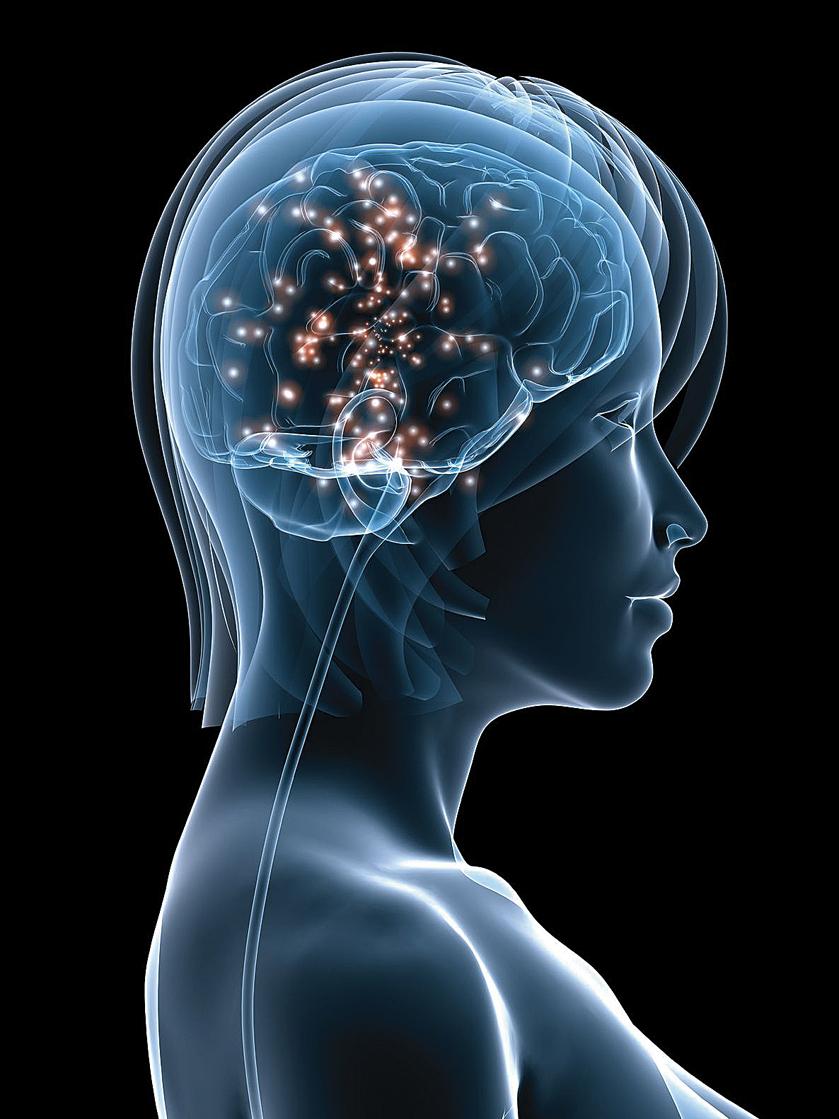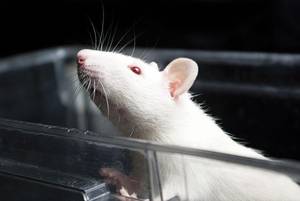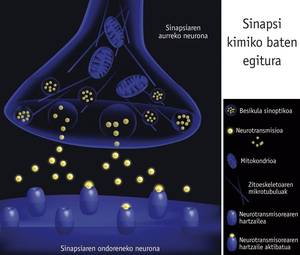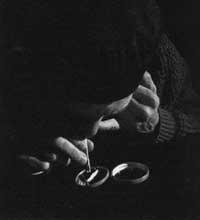Neurobiological Foundations of Pleasure: Brain Reward System
2013/07/01 Echeazarra Escudero, Leyre - Farmazian lizentziatua eta Fisiologia arloko ikertzaileaEHU Iturria: Elhuyar aldizkaria

The discovery of the center of pleasure
In the 1950s, scientists James Olds and Peter Milner investigated at the University of McGill (Montreal, Canada) a brain area in the brain stem, called a training network. For this purpose, the rats were placed very long and thin microelectrodes connected to an electric stimulator, in order to stimulate this certain brain area. Because there were no receptors to feel pain in the brain, rats did not feel pain, but they did bother sensations. What researchers Olds and Milner wanted to see was if, as they approached a place, they gave them electric shocks when they felt rats avoided that place.
A rat was anesthetized, microelectrodes were placed and the experiment was made. The researchers were surprised to see the result: the rat, instead of avoiding them, preferred places that received electric shocks. In addition, according to the time when they gave him electric shocks, he liked one place or another; in other words, the researchers could drive the rat stimulating his brain. The explanation was as follows. It seems that the microelectrode was installed elsewhere, specifically in an area called a peluzed septum. Usually making such mistakes is a bad news, since the experiment is wasted, but in this case the error of the researchers became an advantage. Scientists Olds and Milner reorganized their old research hypothesis by discovering the "centre of curiosity".
To continue with the research of this new center, an experimental design was carried out that allowed rats to stimulate themselves. For this purpose they used a system devised for a long time by psychologist Burrhus Frederich Skinner: The boxes of Skinner. In these boxes, rats receive food (prize) or a painful sensation (punishment) when pressing a lever. Rats find it quite easy to understand the mechanism and quickly show which lever they like the most. In this case, the researchers made a change: by pressing the rats the lever, instead of collecting food, they stimulated the specific areas of their brain. After these experiments, the researchers discovered how the interest in the lever of electric shocks was disproportionate, much higher than that of food or water. Rats squeezed the lever a thousand times an hour to stimulate your brain!
After seeing these clear results, Olds and Miler began to think that the area of the brain investigated was not a "center of curiosity" but a "center of pleasure". This center was better investigated and after some experiments the structure and network of neurons was described. It was called a reward system because it is related to pleasure or the dopaminergic mesocorticolinic pathway; the main components of the mesocorticolinic circuit are the ventral tegmentel zone of the mesencephalon (VTA) and the nucleus accumbens of the prosencéfalo (NAC), the prefrontal cortex brain (PF) and the neurotramine circuit.
Structure and operation of the prize system
The prize system is a circuit formed by several interconnected areas of the brain. In VTA are cell bodies (or somes) of dopaminergic neurons. From there, the extensions (or axons) of dopaminergic neurons are projected to other places, which constitute the central axis of the prize system. These axons reach the nucleus accumbens and from there to the amygdala and the prefrontal cortex. In addition, the reward system connects with other brain areas such as hippocampus, striated and other areas of the mesencephalon or cortex.

It has been explained that the neurons that form this circuit use dopamine neurotransmitter. Although dopamine is the main neurotransmitter, other neurotransmitters are involved in this complex and integrated system. Thus, glutamatergic neurons, ergic GABA, serotoninergic, noradrenergic or opioid neurons can be found.
How is the neuronal network that composes the prize system activated? When a stimulus activates the neurons of the ATC, the generated nervous impulse is transported through the axons to the projection zones, and finally there are spills of dopamine in these brain areas (when dopamine is stored at the end of the axons). On the one hand, the nucleus accumbens is activated, a brain area related to prizes, laughter, pleasure, addictions and fear. On the other hand, dopamine reaches the cerebral area, the amigdalara, in which emotions are related to creativity, and to the hippocampus, the cerebral area that controls memory. Finally, dopaminergic axons are also projected on the prefrontal cortex. This area is related to identity, decision-making processes, social behavior and other complex cognitive processes. In all these places dopamine produces pleasure.
The connections are also produced inversely. The axons of the prefrontal cortex and the neurons of the nucleus accumbens reach the ATV neurons. The neurons of the prefrontal cortex are glutamatergic, that is, they secrete neurotransmitter glutamate (excitant). The neurons of the nucleus accumbens are ergic GABs, that is, they secrete GABA or gamma-aminobutyric acid (inhibitor). Therefore, the effect is the opposite: glutamate stimulates the dopaminergic neurons of the ATV, causing leaks of dopamine, while the neurotransmitter GABA reduces the emission of dopamine. Thus, the amount of dopamine that reaches the projection sites is regulated.
Relationship with pleasure and drug dependence
As scientists Olds and Milner saw, in the ATC scenarios in humans dopamine emissions cause pleasure. Dopamine leaks are produced by electrical stimulation of the brain, as was done in rats. The truth is that any activator of dopaminergic neurons of ATV is pleasant. Sex, food, drink, music or play are positive reinforcements naturally, as they activate the prize system. Drugs act the same, since they cause dopaminergic hyperactivity. In all cases you can create dependency, for example, on sex, food or coin machines. In the case of drugs it can be easier, that is to say, a high percentage of pathological habits are established that have as objective the consumption of drugs.
In all cultures, different substances that act on the brain are used. These substances can be soft (such as caffeine) or high potency (such as cocaine or morphine). Others are sedatives or hallucinogens. The effects are very different. Coffee, cocaine, or amphetamines are stimulating, eliminate sleep, and accelerate mental function. For their part, sedatives (alcohol, barbituric, benzodiazepine or GHB) produce drowsiness and hinder coordination and reflexes. Opioids (morphine or heroin) cause analgesia and euphoria and hallucinogens (LSD, mescaline or ketamine) modify the senses, perception and mood. Regardless of the effect, to a greater or lesser extent, drug use in all cases can be excessive. This may be because drugs are effective substances that reinforce the effect of dopaminergic neurons or, what is the same, they are substances of great power to make you feel pleasure.

How do they reinforce the action of dopamine? For example, cocaine or amphetamines prolong the effect of dopamine, since the neurotransmitter remains for a long time in the interneuronal sites, that is, in the synapses. In this way, the effect of dopamine is longer and, therefore, the feeling of pleasure. The mechanism is as follows: once the axon dopamine is released and activated in the following neuron, it disappears from the synapsis because a protein takes dopamine to return it to the axon. Cocaine or amphetamines block this carrier protein.
For its part, the active principle of cannabis (THC) is associated with specific receptors (CB1). These CB1 receptors are found in several axons that secrete GABA. Since THC inhibits the release of GABA and GABA neurotransmitters inhibit the activity of dopaminergic neurons of ATV, THC inhibits the blocking of ATV neurons (caused by GABA). As a result, more dopamine is secreted.
Nicotine is associated with specific nicotinic receptors of the glutamatergic axon. These glutamatergic axons reach the ATV. Since glutamate is an exciting neurotransmitter, it activates the neurons of the ATV, so dopamine is secreted in the projection zones.
In other cases, the effect produced in the prize system is less clear and direct. Opioids, for example, are associated with specific opioid receptors. In this way they act on the nucleus accumbens and finally the activity of the dopaminergic neurons changes. Various hallucinogenic substances, such as LSD, have acted on the serotonergic system, which allows to modify the activity of the nucleus accumbens. This can indirectly shape the activity of dopamine.
In addition to the different mechanisms of action, the ability to reinforce the prize system is different and the strength of creating dependency. Finally, many other environmental factors must be taken into account in order to understand the dependencies. However, what is clear is that the degree of activation of the prize system is related to the capacity of dependency producers.
Bibliography Bibliography Bibliography

Gai honi buruzko eduki gehiago
Elhuyarrek garatutako teknologia




